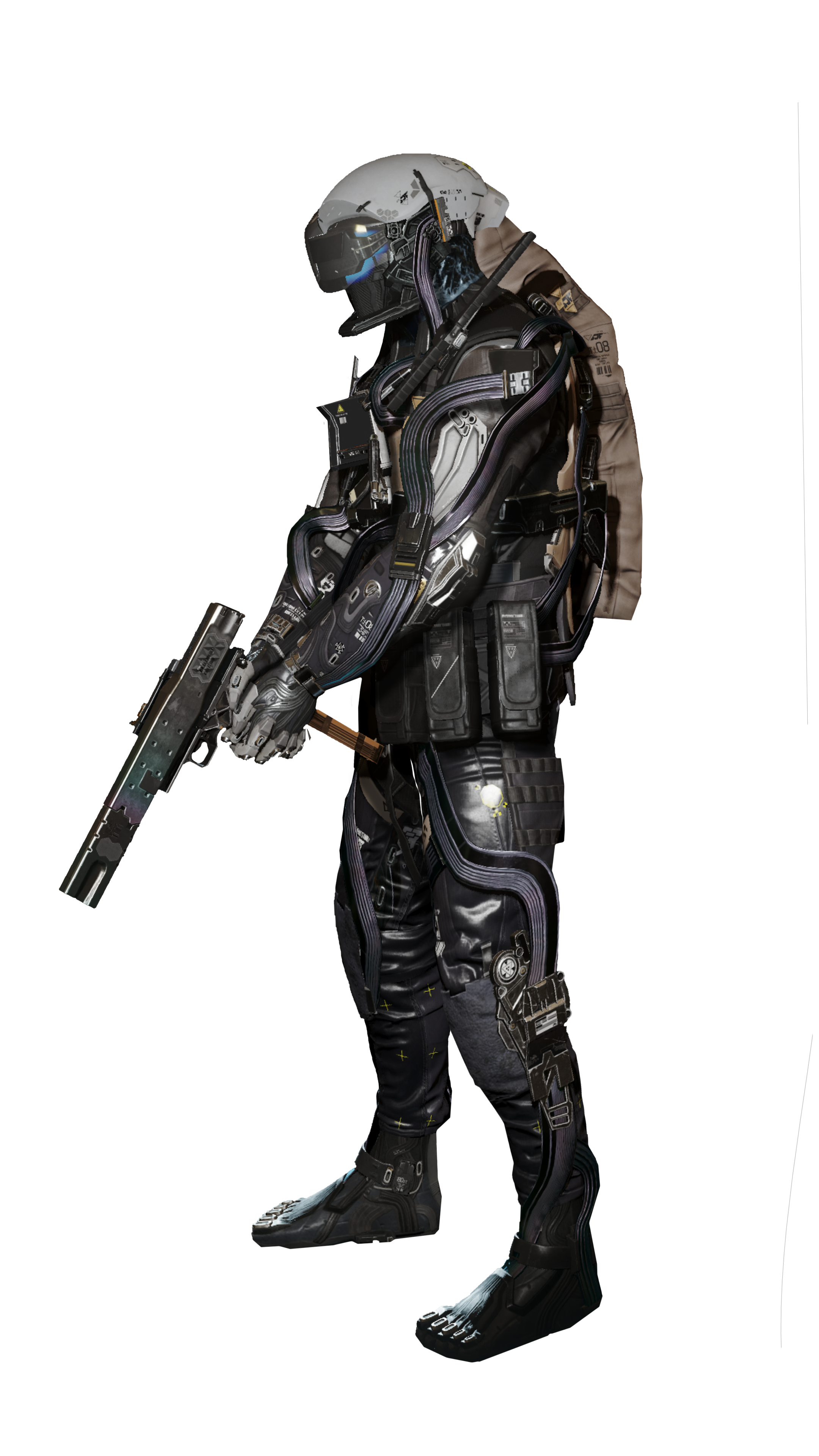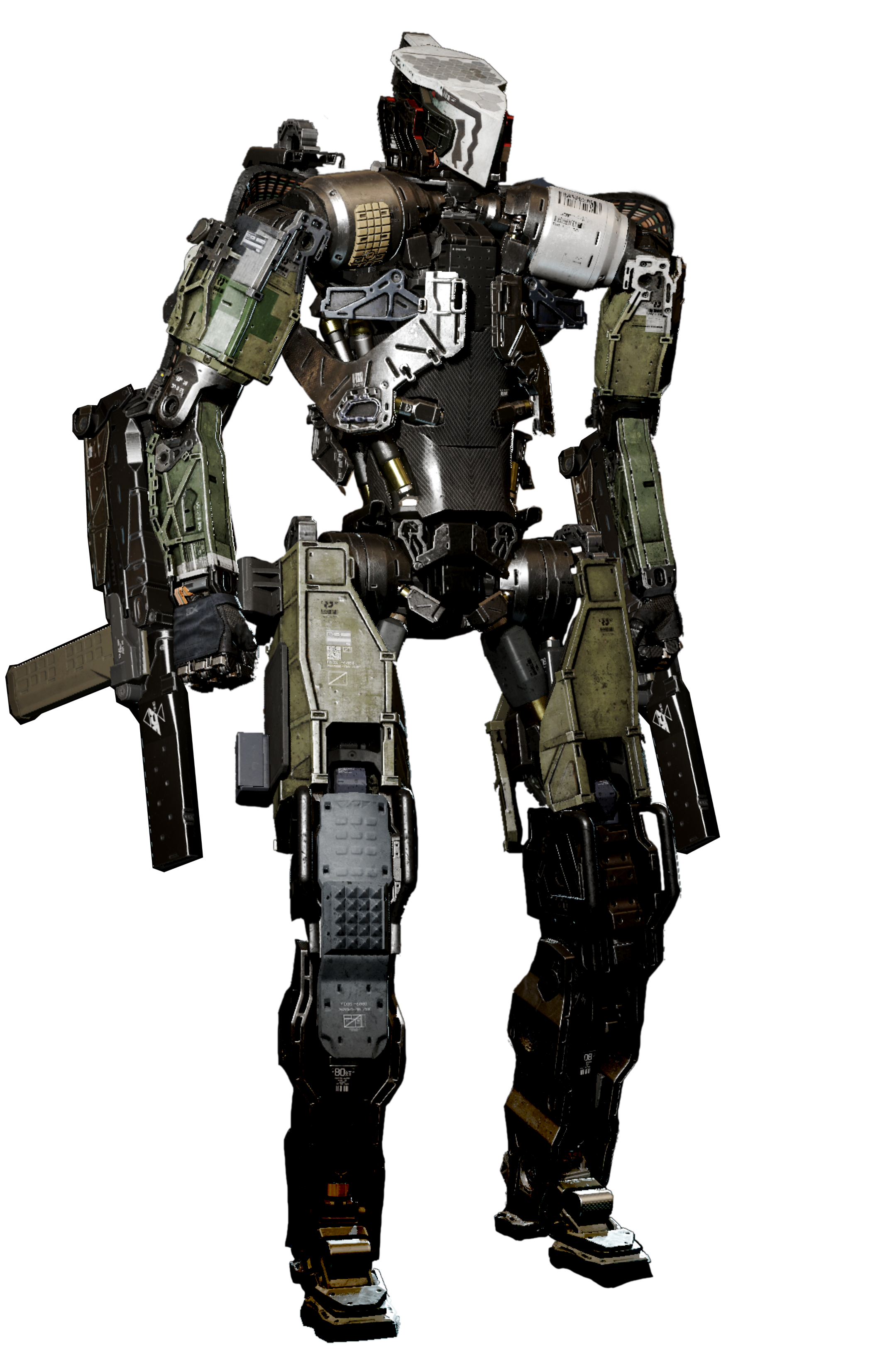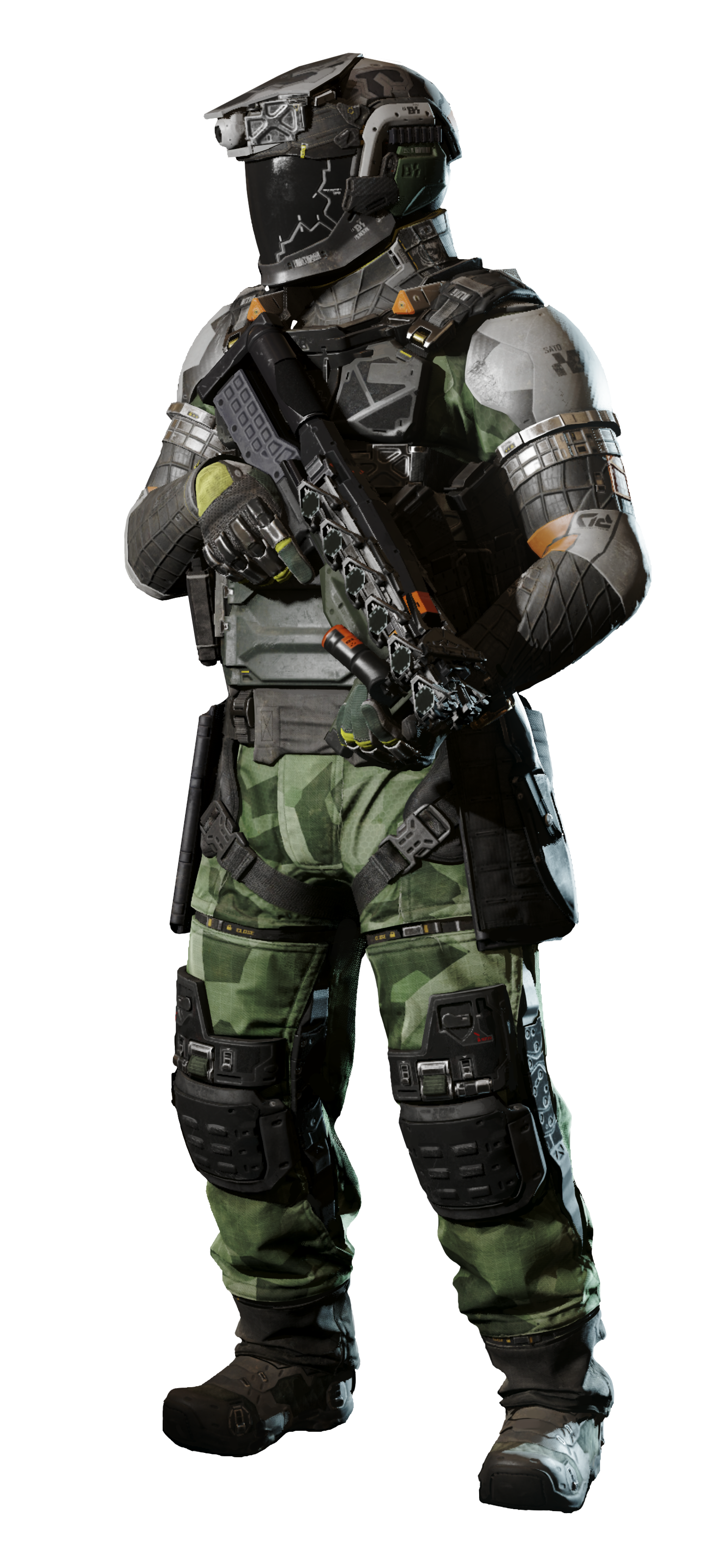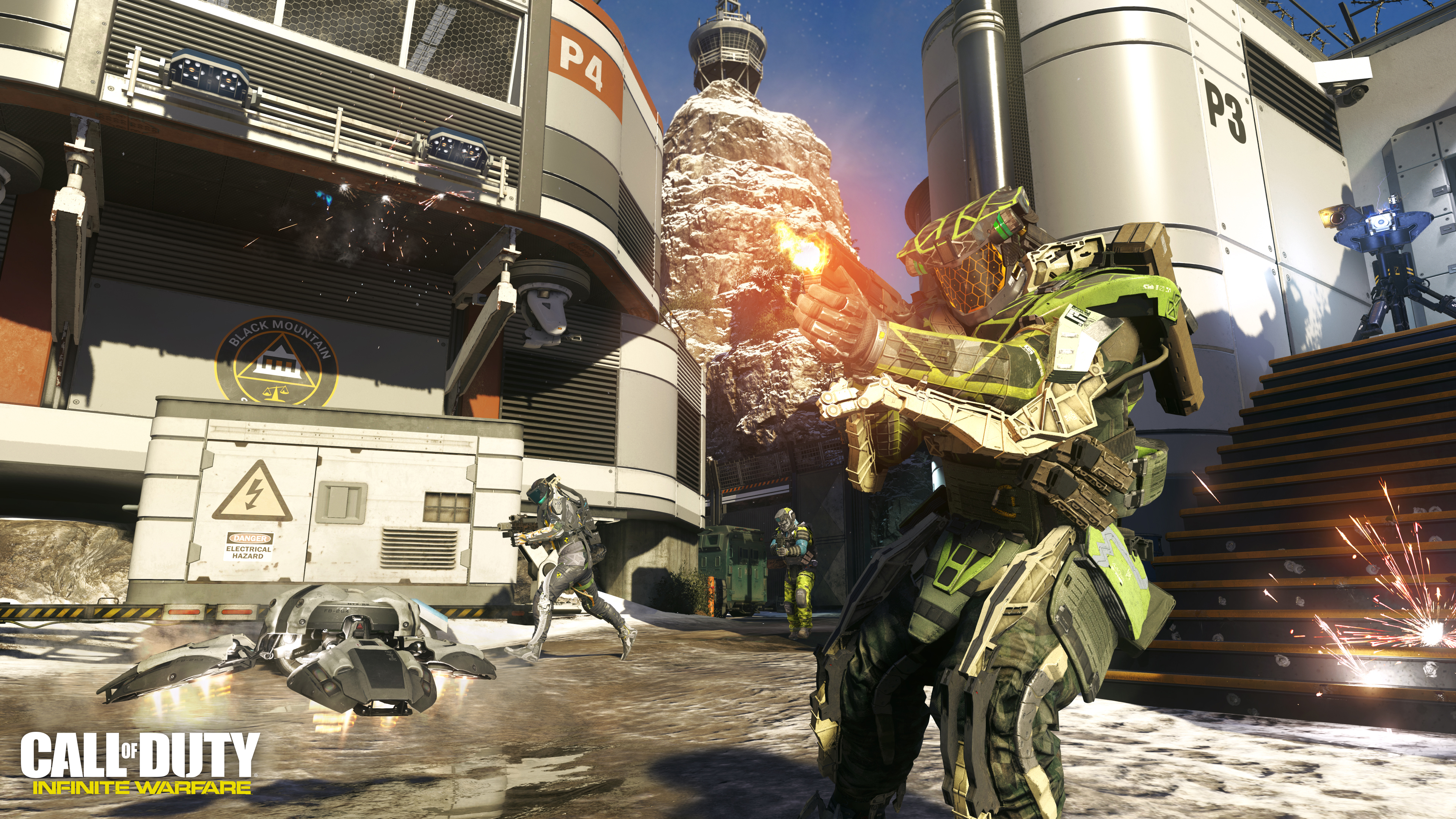Call of Duty is the juggernaut of not only the video game world, but of the entertainment industry. It frequently smashes records, and the franchise’s annual releases set the pace of the holiday shoppinh season. Activision is in the middle of hosting its second Call of Duty Experience event (XP for short) in sunny Inglewood, California. PlayStation LifeStyle is here and bracing the heat of the blacktop (and fans in the crowd) to sit down and play all on offer. First up, the latest entry in this long-running series, Call of Duty: Infinite Warfare. Read below to get our initial impressions, and important information about the new game mechanics.
Player and Playspace
Lead Multiplayer Designer Joe Cecot stated that the core vision for Infinite Warfare focused on the “Player” and the “Playspace.” Levels tend to be lane-based, though these lanes are usually not as obvious as in a MOBA game. These playspaces were designed with four pillars in mind: there’s a fast time to combat, lanes force head-to-head engagements, there are never-before-seen environments the first time you play each map, and layouts are varied in their design. Though we were only able to play a handful of maps during the event, you could get a sense of lane design, and while the action occasionally occurred in hotspots, most of the time enemies were where you least expected them, and a common motif permeated the game: every second matters. Stop paying attention even for a moment, and you could miss your chance to take out an enemy before they put those first few crucial rounds into your armor.
During our hands-on time with Infinite Warfare, we played several modes of the upcoming game. First up was Call of Duty staple, Team Deathmatch. It’s pretty standard fare, but with the options to choose from any of the game’s six combat rigs, your playstyle could vary between spawns if you chose to do so. Beyond a custom loadout of weapons, tech, and equipment, you could also choose one of six combat rigs to play as.

Big Differences
Each Combat Rig has a different look, and they are generally geared towards a particular method of approaching combat. The Merc Rig is a tank-type, with heavy armor and defensive traits such as faster health regeneration. The FTL Rig features experimental tech, can gear up with a powerful “Eraser” pistol, and has traits such as perception which allows you to see when an enemy off your screen is looking at you. Stryker leans towards squad support, and besides turrets he can also use a gravity vortex gun, which fires a mini black hole to suck enemies in. Traits for Stryker are also supportive, such as a trophy drone which destroys a single incoming lethal grenade, recharge, and repeat. Warfighter is a mid-range Rig, and designed to be the most accessible of the rigs. His payloads include the Claw, a spread-shot weapon with ricochet bullets, designed to clear out an area or hit enemies around corners, and traits such as Ping, which fire off a sonar ping when an enemy is taken out, revealing other nearby enemy locations to teammates. Phantom is stealth-oriented, and feels made for snipers. His arsenal includes the Ballista EM3, which is a projectile launcher that can pin enemies to the wall, and traits such as heightened senses to alert you to anyone trying to sniff you out. Finally, the Synaptic Rig is geared for speed and close-quarters combat. The Rewind payload reverses your position, refilling your health and ammunition, while the Combat Burst trait gives you a brief burst of speed after each kill.
Next up was a Domination game. Now for those unfamiliar with the mode, each team attempts to control three control points in a given map, earning more points for controlling more of the control points than the enemy. I found decent success playing as the Merc Rig with the Bull Charge payload, which used a large shield as a battering ram to take groups of enemies out, who were usually huddled together and trying to defend a control point.
Hot Potato Drone
The final mode we tried during the event was one of Infinite Warfare’s newest modes, “Defender.” In this mode, two teams are vying for control of a drone, which is this small, ball-shaped robot. The drone will disappear after a minute or so of being held before respawning somewhere else in the level, and can be thrown like a grenade (though it doesn’t explode). So this can be used as a “keep away” tactic, to deny the other team from taking control of the drone. No doubt players will use some very cunning plays to keep the drone moving, such as passing it from one jet boosting player to the other in mid-air, faking the enemy out in the process.
Call of Duty: Infinite Warfare feels like an evolution of a tried-and-true formula, and shows us that perhaps Infinity Ward still has a trick or two up their sleeves. The new Combat Rigs, with their unique payload weapons and passive traits, mix things up and ensure different tactics for each situation. Completionists will probably also stay very busy with the weapon crafting system, playing just one more game to earn enough salvage to craft an Epic weapon. While initial reception may have been mixed to Infinite Warfare, it looks like things have shaped up very nicely for the latest entry in the Call of Duty franchise.
Stay tuned for more Call of Duty XP coverage from PSLS and that includes an interview with Infinity Ward on all things Infinite Warfare.
Call of Duty XP 2016
-
Cod Infinite Warfare_mp Rig_ftl

-
Cod Infinite Warfare_mp Rig_merc

-
Cod Infinite Warfare_mp Rig_phantom

-
Cod Infinite Warfare_mp Rig_stryker

-
Cod Infinite Warfare_mp Rig_synaptic

-
Cod Infinite Warfare_mp Rig_warfighter

-
Cod Infinite Warfare_mp_breakout 1_wm

-
Cod Infinite Warfare_mp_breakout 2_wm

-
Cod Infinite Warfare_mp_frost 1_wm

-
Cod Infinite Warfare_mp_frost 2_wm

-
Cod Infinite Warfare_mp_frost 3_wm










